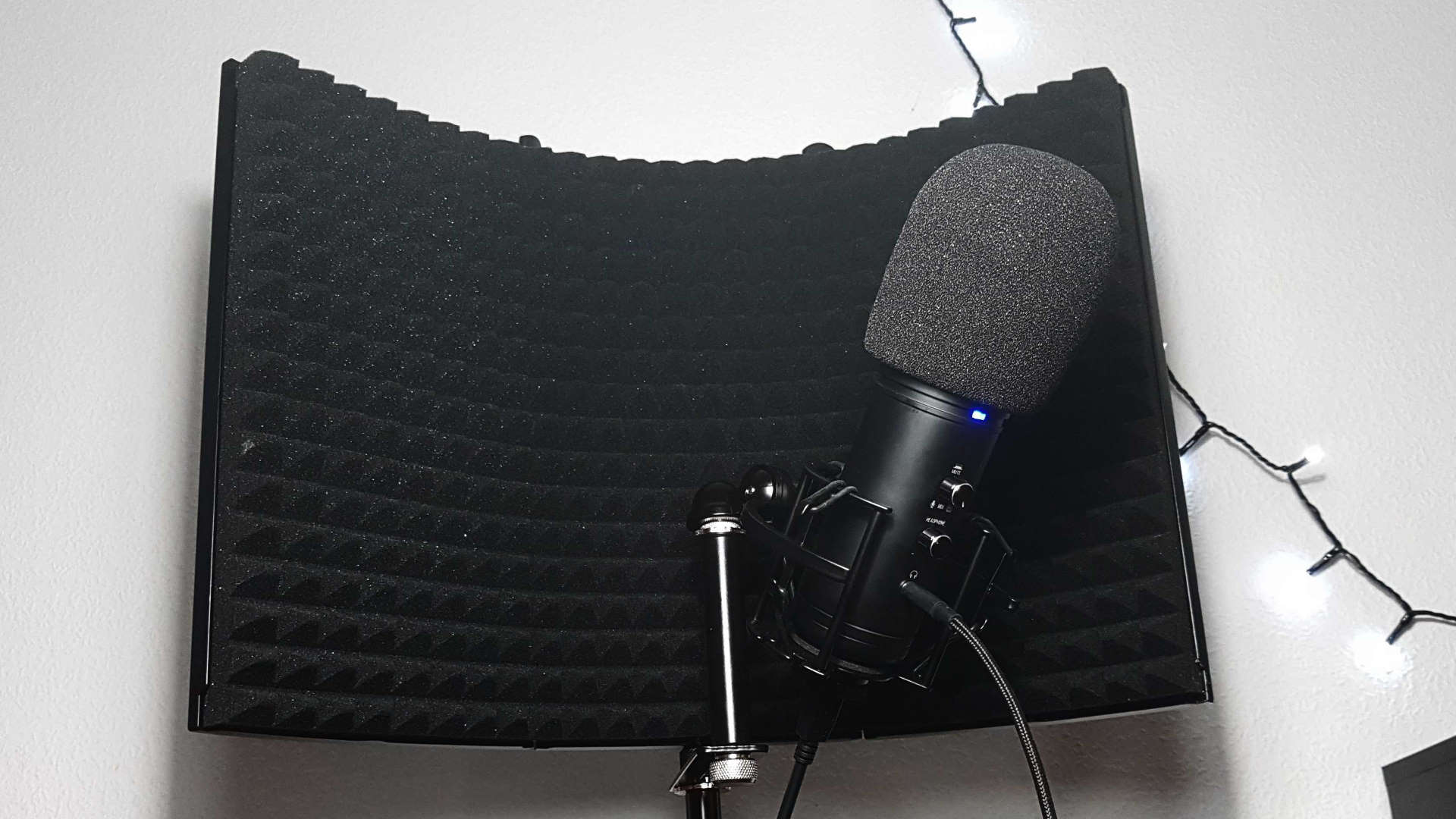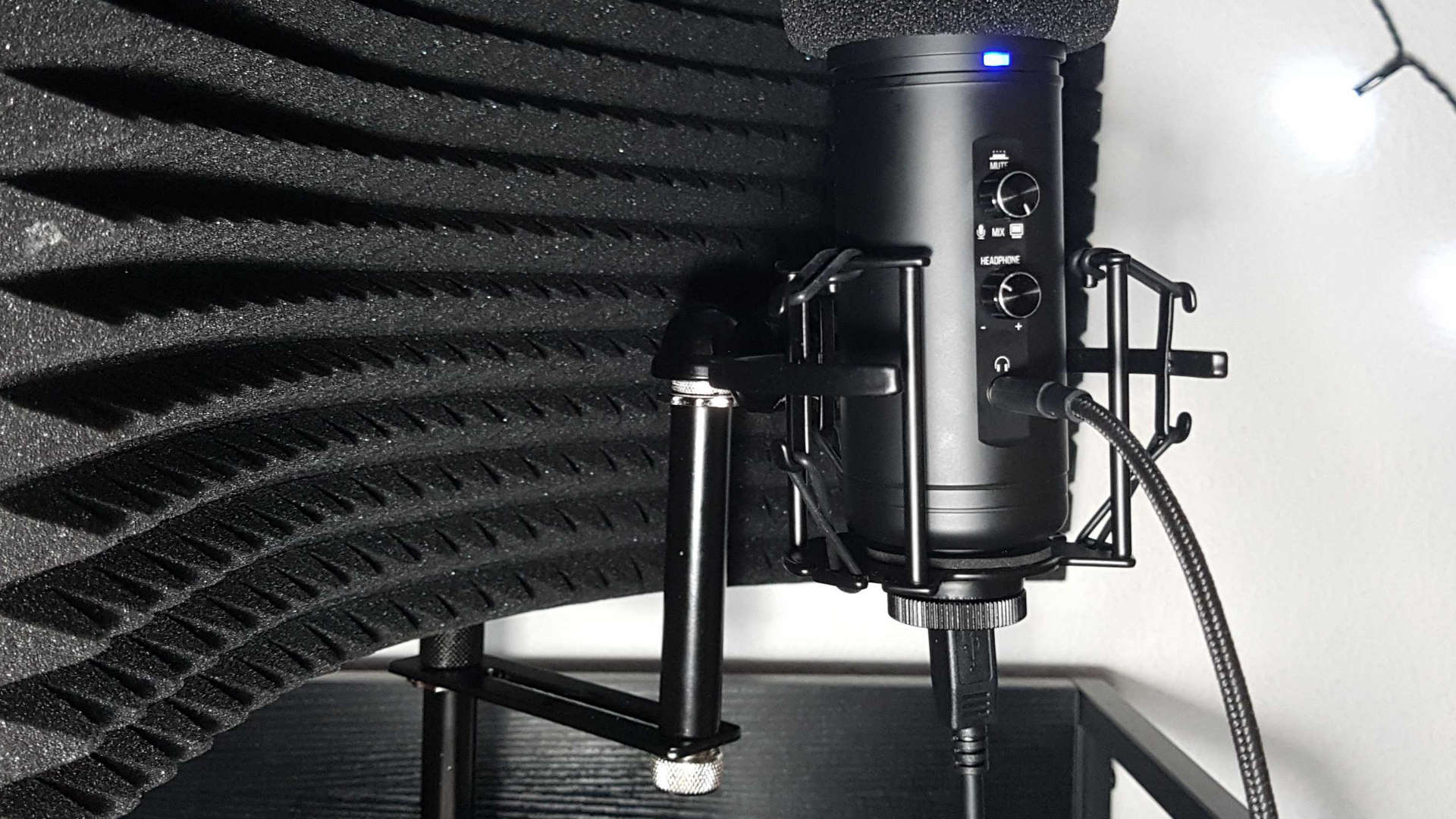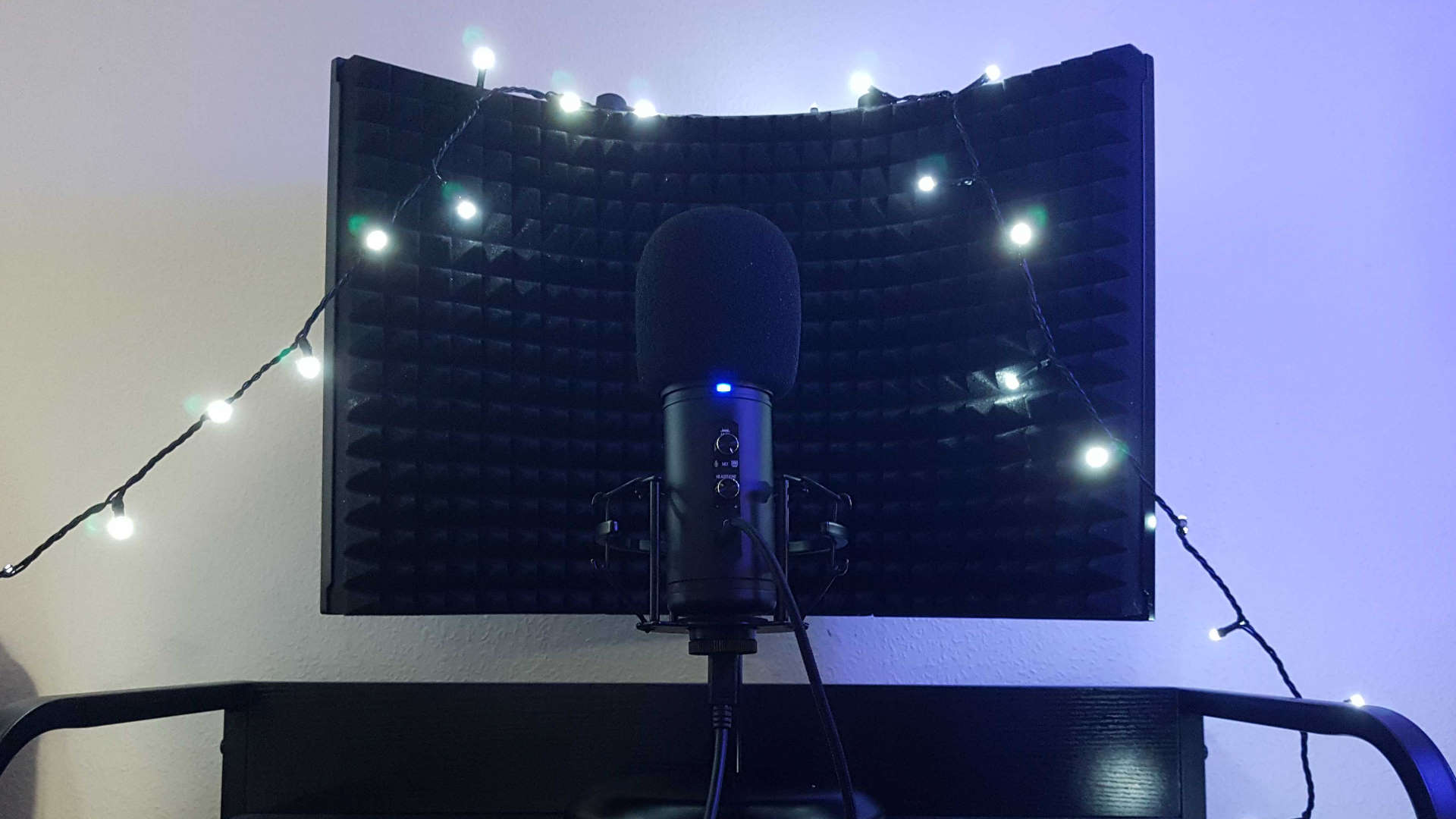Our Verdict
A little clunky, and cardioid only, but it delivers breathtaking solo audio recording and comes with pro accessories and nifty features that make it well worth a look.
For
- Awesome recording quality
- Inbuilt mixer dials
- Zero-latency voice monitoring
- Pro accessories included in price
Against
- Bit of a space-eater
- USB not as versatile as XLR
- Weird clunk sound on mute button
- Single directional pattern
PC Gamer's got your back
With the Rudox GXT 259 microphone, Trust has promised studio-quality recording and delivers it tenfold. It may not come with an XLR connection, but for a USB mic that's just over the price of a Blue Yeti X—with a host of fancy greebles that we'll get into in a moment—it's got a lot to offer for the money.
Directional Pattern: Cardioid
Sample rate: 96kHz
Frequency response: 18-21,000Hz
Connection: USB Type-B
Price: £169 with a 2 year warranty
Size: 44 x 43cm x 23cm / 16.5 cm footprint
There's something to be said first off about the Rudox GXT 259's incredible 96kHz sample rate. That's double most of those on our best microphones for streaming, gaming, and podcasting list, and is backed by an above average 18-21,000Hz frequency range. All this works to deliver professional audio quality and is helped dramatically by the pop filter and bundled isolation shield—you even get a quality shock mount with spare rubber bands for your money. All these add-ons mean the Rudox GXT 259 can stand tall in delivering the clarity of voice any content creator or musician could want.
The quality really is top-notch. Compared to the similarly priced Blue Yeti X the Rudox gives a much crisper, close sound. Although it doesn't sport all the different directional patterns, there's minimal distortion and interference—it just sounds so true to life. The tests below should be a testament to this, and note how much of a difference it makes without the reflection shield.
Unboxing and all, the setup took only 15 mins or so, though I did need to follow the instructions as it's not the most intuitive stand ever. Either way, the build quality is sturdy, and it's easy to rotate and shift around to where you need it to be. It may not have the versatility of a boom arm, but wherever you move it to, it's well balanced enough that I don't expect to knock it over every time I nudge it accidentally. And should you knock it, any rumbles you might hear are dampened nicely thanks to the shock mount.
All these add-ons are worth it, but they do make for a stout and slightly unwieldy setup. The desk stand has a 16.5cm diameter footprint—quite substantial even without the shield. And if you're looking to record video as well, there may be some issue working around the reflection shield. With it attached, the thing takes up as much space as another monitor, although it is removable and can be adjusted for a smaller curve—that doesn't affect the sound too much but gives you a tiny bit more space.
Some cheaper mics have fancy touch-to-mute options, whereas the Rudox GXT 259's mute button involves clicking down on the mixer dial. This requires a certain level of dexterity as you round the mic with your fingers and try not to scrape it with your nails, and the click itself makes an oddly satisfying clunk sound—though probably undesirable in most recording situations.



There's something to be said about the Rudox mic's zero-latency voice monitoring, along with volume and mixer controls on the front of the mic, though. With integrated AUX and dials, there's no need to play around with digital mixer software or an external interface—just twist the dial to decide how much of yourself or the desktop audio you want to come through, and there's no input lag to put you off while working.
You're limited to a single directional pattern with the Trust Rudox GXT 259: cardioid. That means the Trust is one for the musicians, podcasters, and vocal artists among us who need to minimize background sound interference and record crisp, dry audio from a single direction.
It may not be for vloggers or streamers due to its size, but Trust has been able to pack all that sound recording sensation into a sub £170, modular, USB powered microphone package. Though it's a little clunky, it offers a vast frequency response and sample rate, along with a boatload of fantastic podcast-friendly features that are not to be overlooked for the price.
A little clunky, and cardioid only, but it delivers breathtaking solo audio recording and comes with pro accessories and nifty features that make it well worth a look.

Screw sports, Katie would rather watch Intel, AMD and Nvidia go at it. Having been obsessed with computers and graphics for three long decades, she took Game Art and Design up to Masters level at uni, and has been rambling about games, tech and science—rather sarcastically—for four years since. She can be found admiring technological advancements, scrambling for scintillating Raspberry Pi projects, preaching cybersecurity awareness, sighing over semiconductors, and gawping at the latest GPU upgrades. Right now she's waiting patiently for her chance to upload her consciousness into the cloud.


